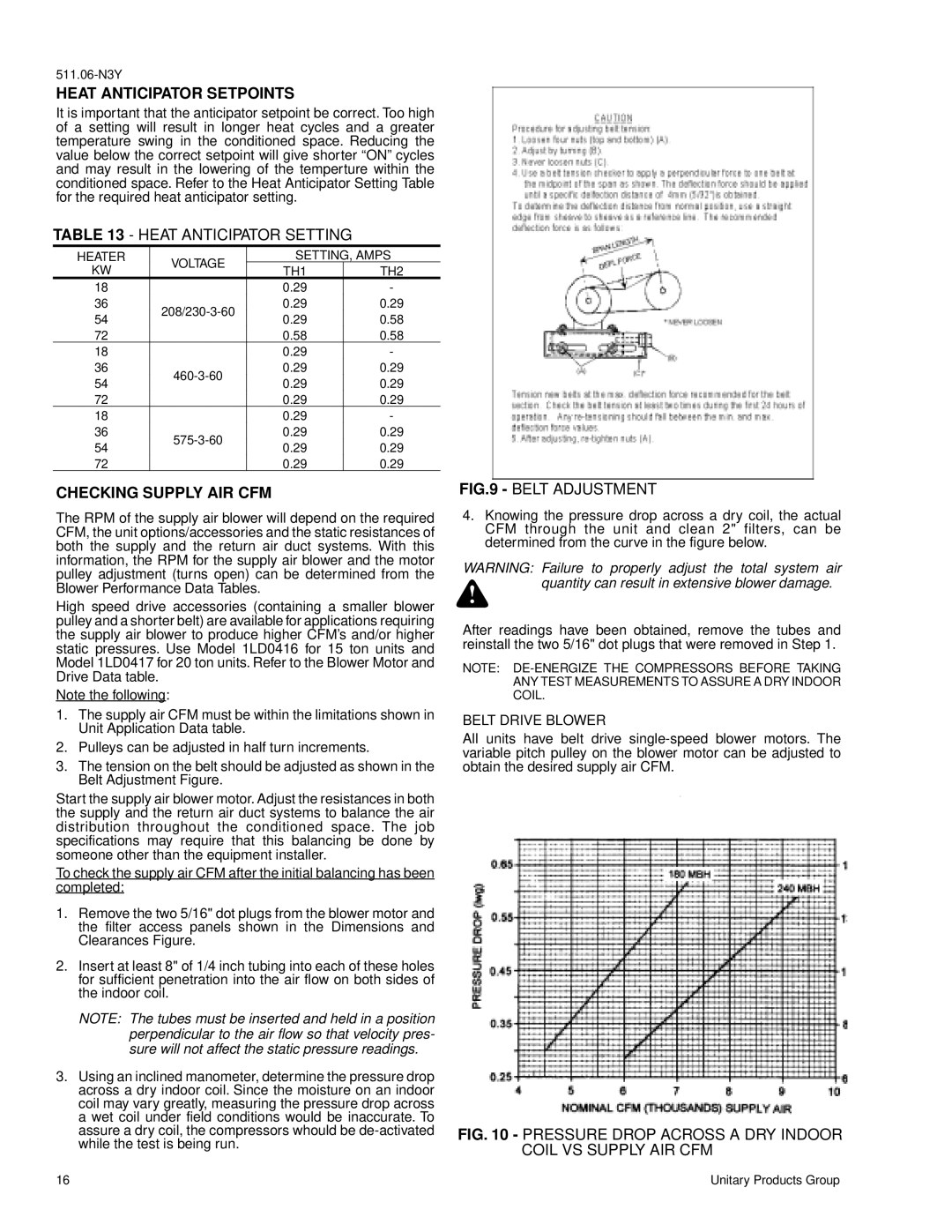B1CH240, B1CH180 specifications
The York B1CH240 and B1CH180 are two prominent models in the commercial HVAC (Heating, Ventilation, and Air Conditioning) sector, known for their efficiency and reliability in demanding environments. Both units are designed with the latest technologies to provide optimal climate control, making them suitable for a variety of applications including offices, retail spaces, and industrial environments.One of the main features of the York B1CH series is its high energy efficiency. These models are equipped with advanced inverter technology, allowing them to adjust their cooling and heating output based on the current demand. This not only minimizes energy consumption but also reduces operating costs, making them an environmentally friendly choice. The units also meet or exceed industry standards for energy efficiency, complying with stringent regulations set forth by organizations such as ASHRAE and ENERGY STAR.
Another key characteristic of the B1CH240 and B1CH180 is their adaptability. These units come with customizable settings and programmable controls, enabling users to optimize performance based on specific needs. Whether it is cooling an entire building or maintaining comfortable temperatures in different zones, the B1CH series can be tailored to fit the unique demands of any space.
In terms of technology, York has integrated advanced refrigerant management into the B1CH series. The units utilize R-410A refrigerant, which not only enhances cooling efficiency but also minimizes environmental impact. This refrigerant is known for its higher performance and lower toxicity compared to traditional options, aligning with global efforts to reduce ozone depletion.
Durability is another hallmark of the York B1CH240 and B1CH180 models. Constructed from high-quality materials, these units are designed to withstand the rigors of everyday use while maintaining peak performance. The units are also equipped with comprehensive diagnostic and monitoring systems that alert users to any potential issues before they escalate, ensuring uninterrupted operation and reducing maintenance downtime.
Moreover, the B1CH series features a quiet operation mode, making them ideal for noise-sensitive environments. The design incorporates sound-dampening materials and efficient airflow dynamics to ensure that the units operate at a low noise level while providing powerful heating and cooling.
In summary, the York B1CH240 and B1CH180 models stand out in the HVAC market for their energy efficiency, adaptability, advanced refrigerant management, durability, and quiet operation. Together, these features make them an excellent choice for businesses seeking reliable and cost-effective climate control solutions. Whether for new construction or retrofitting existing spaces, these units are poised to meet the diverse needs of commercial and industrial applications.

